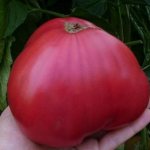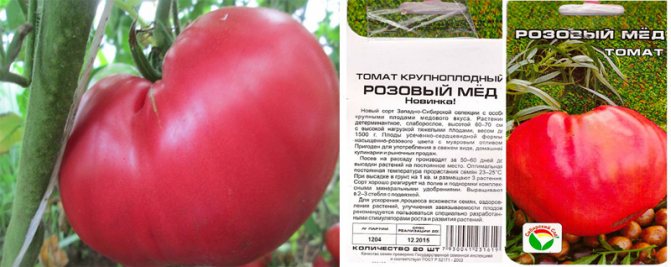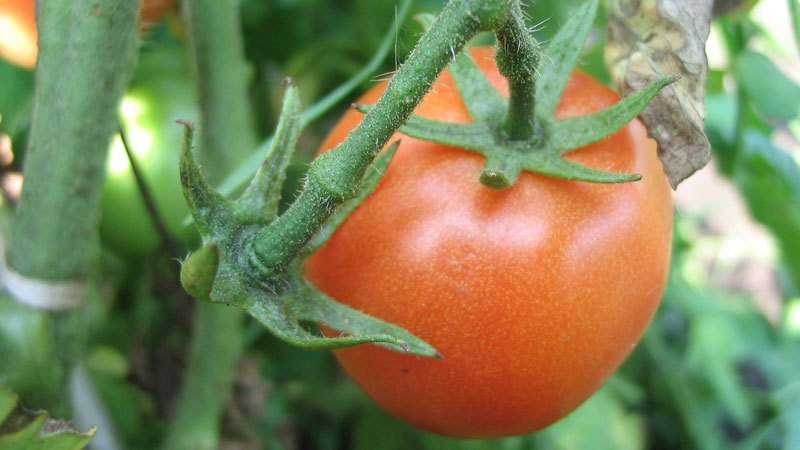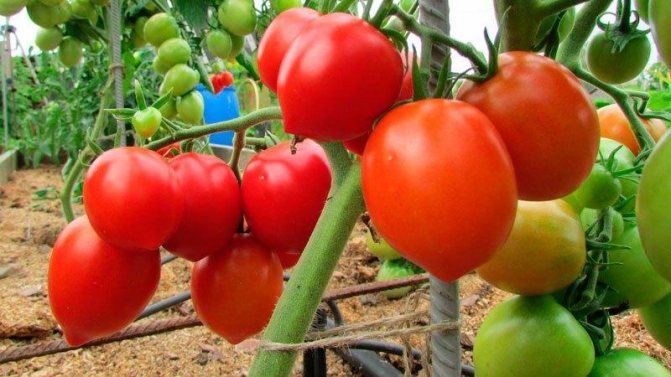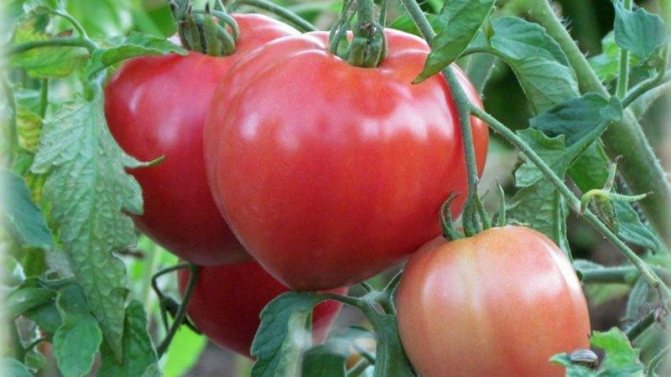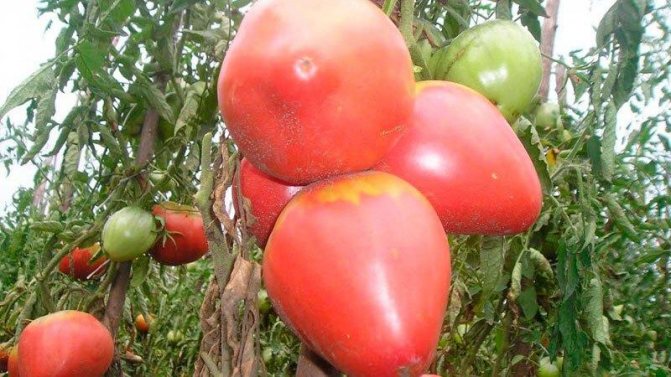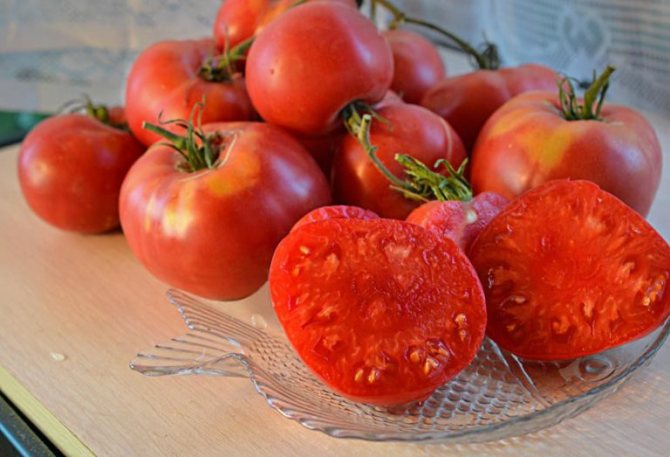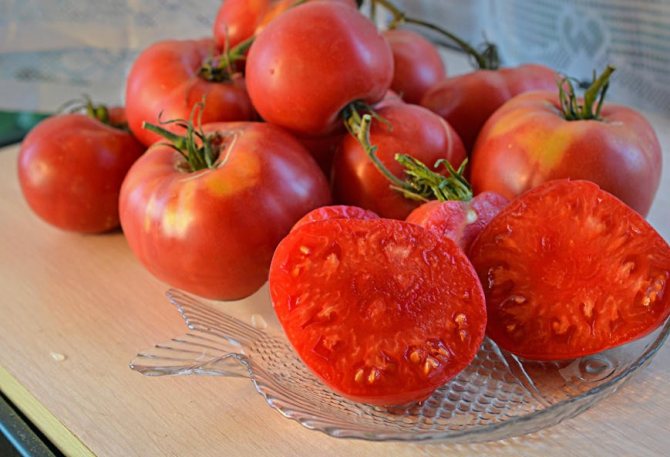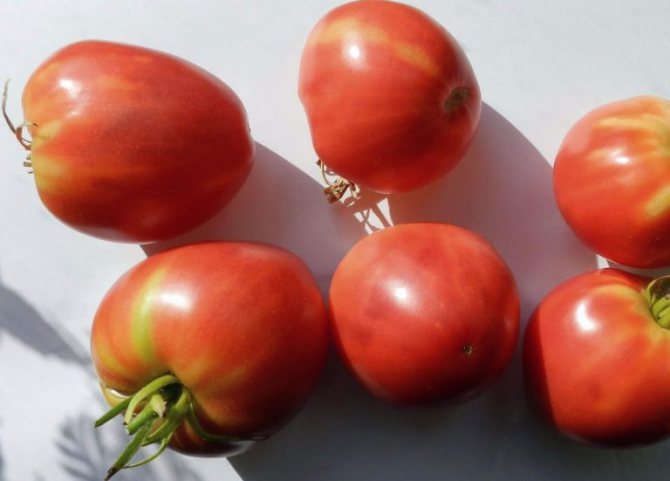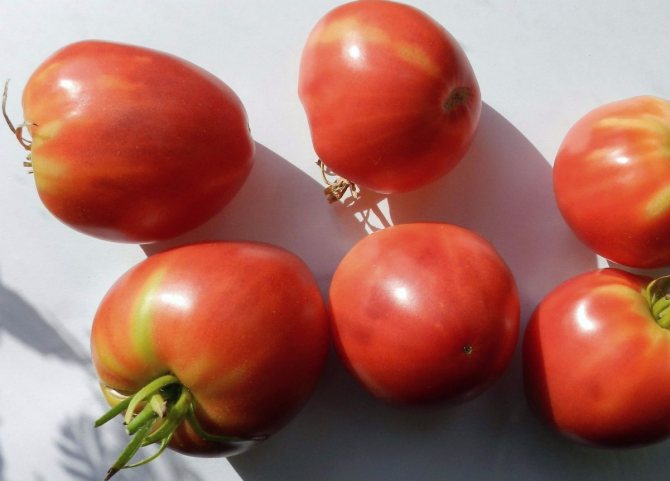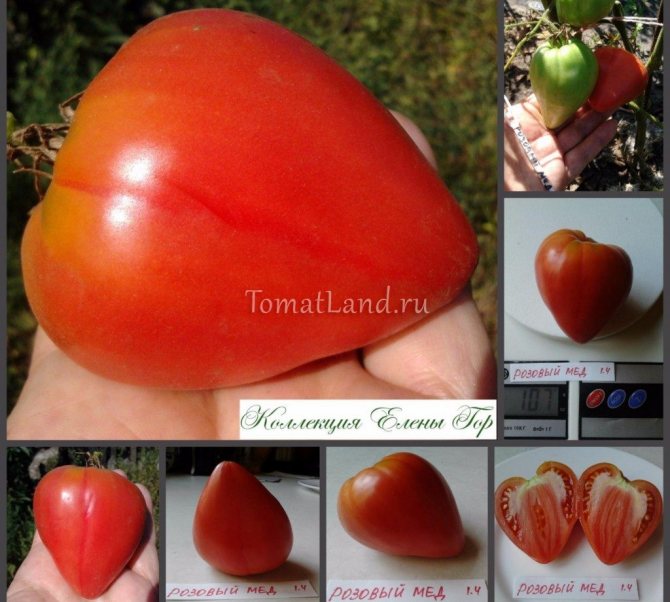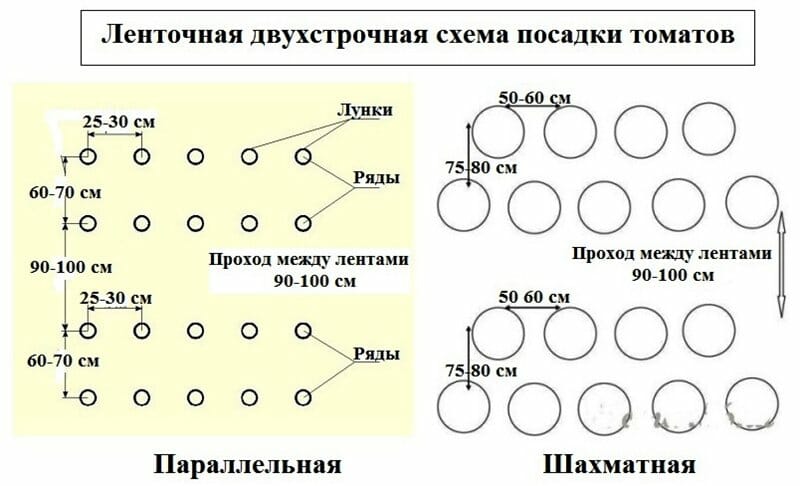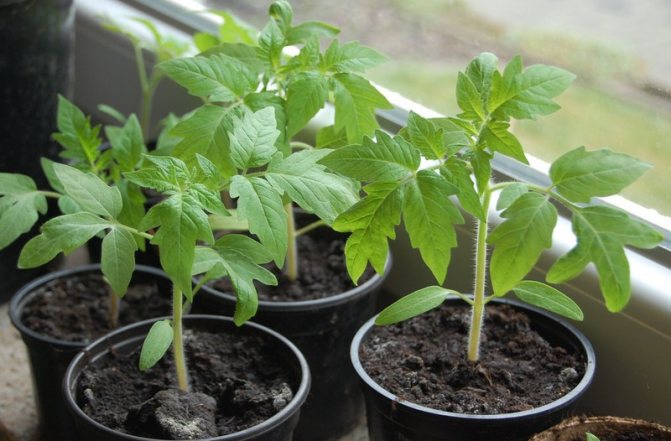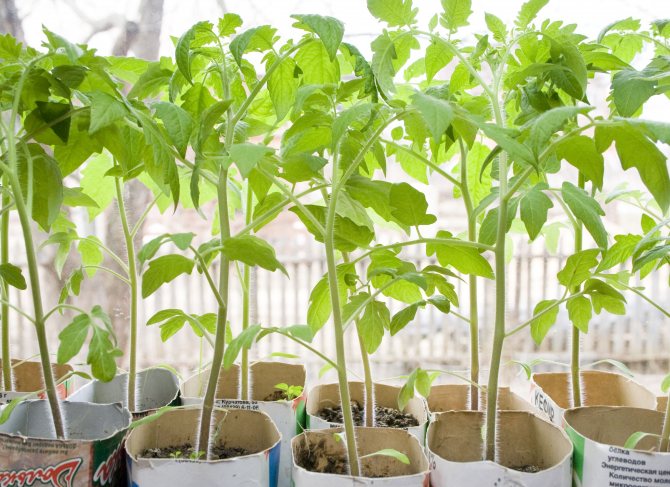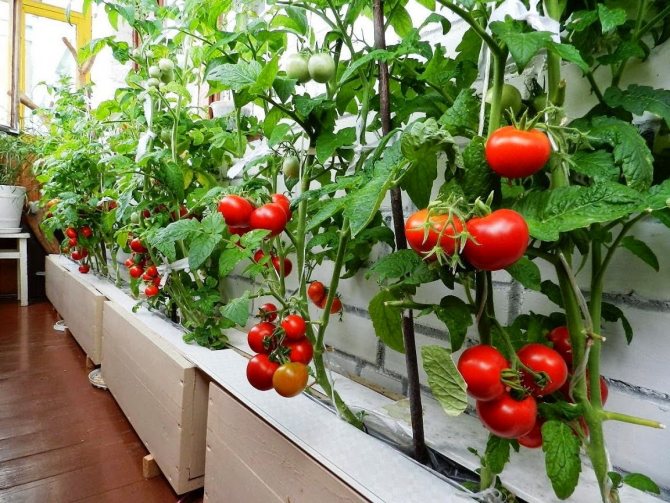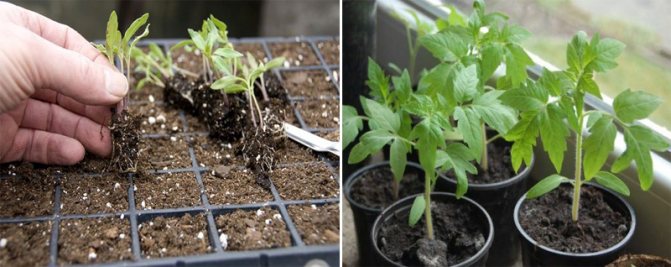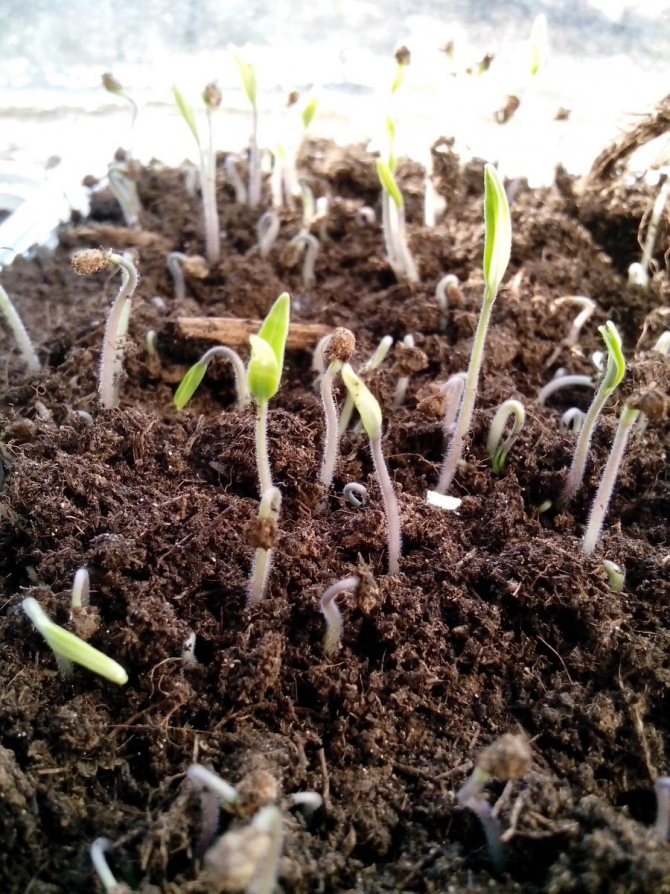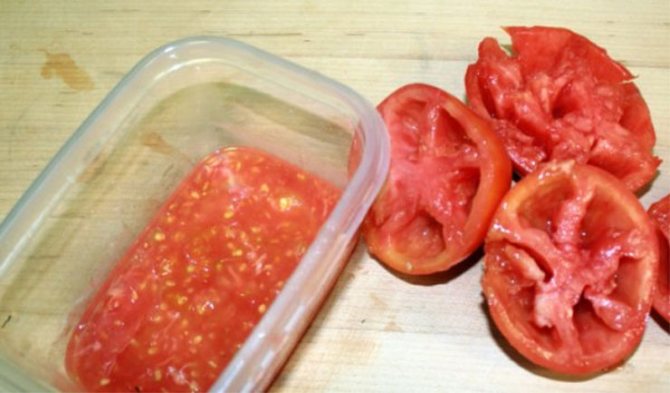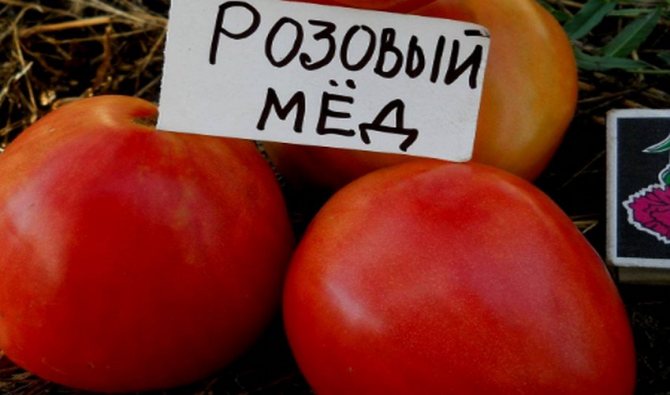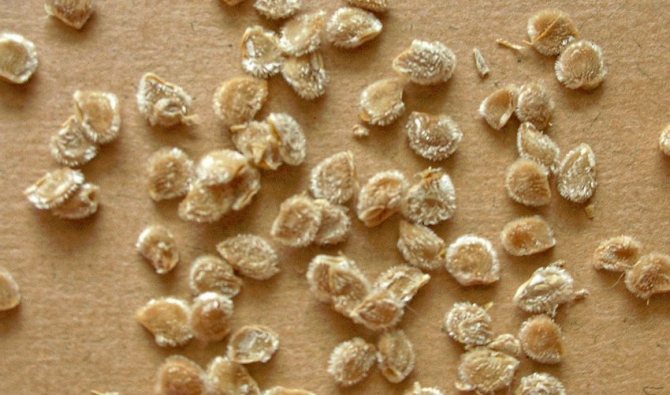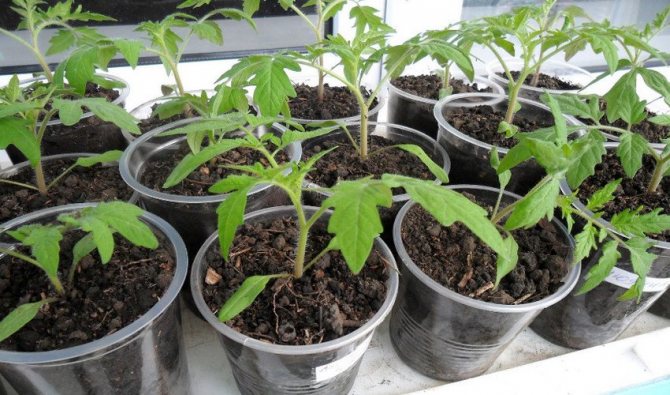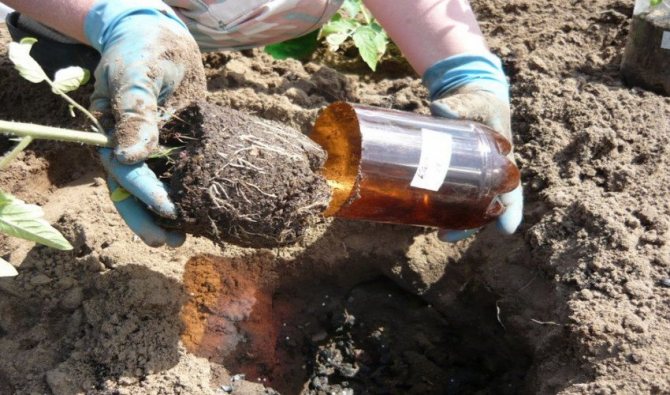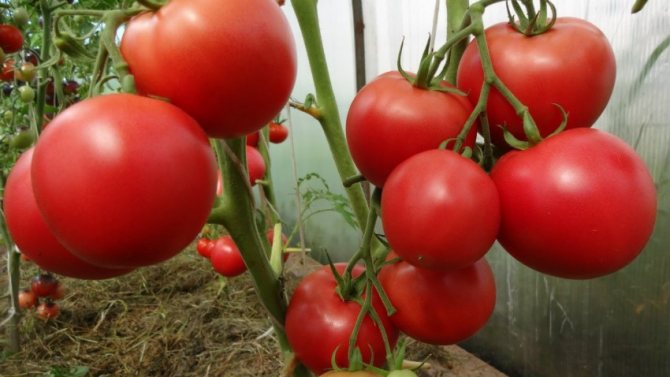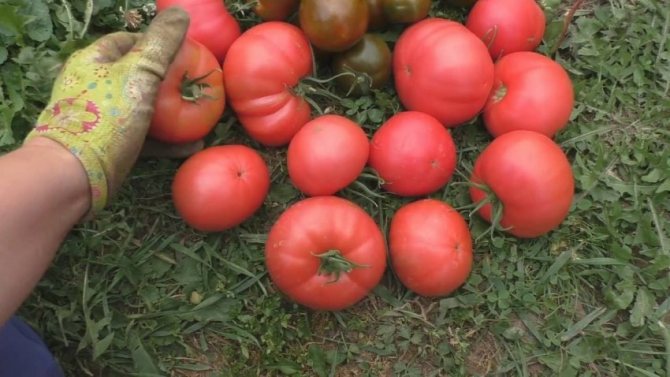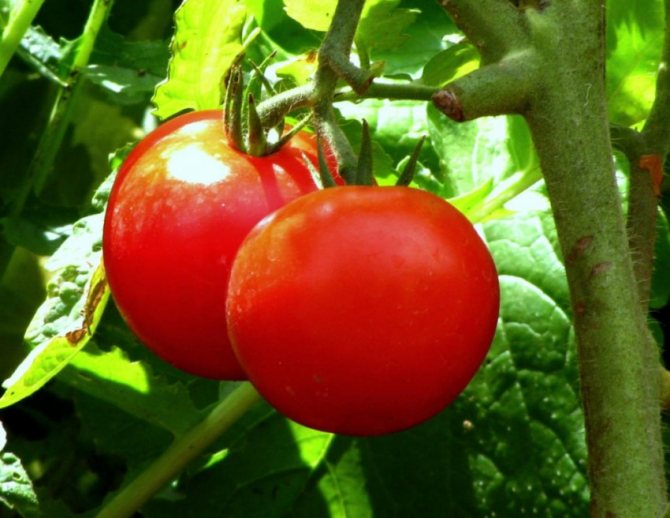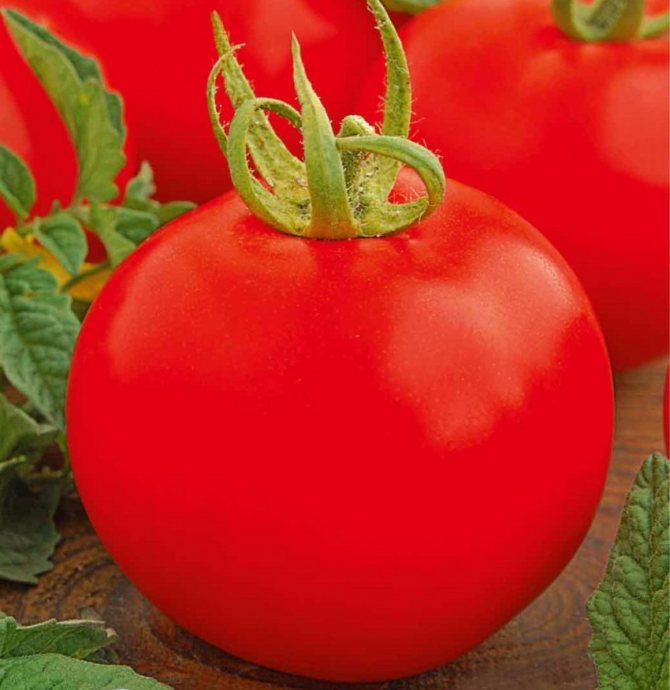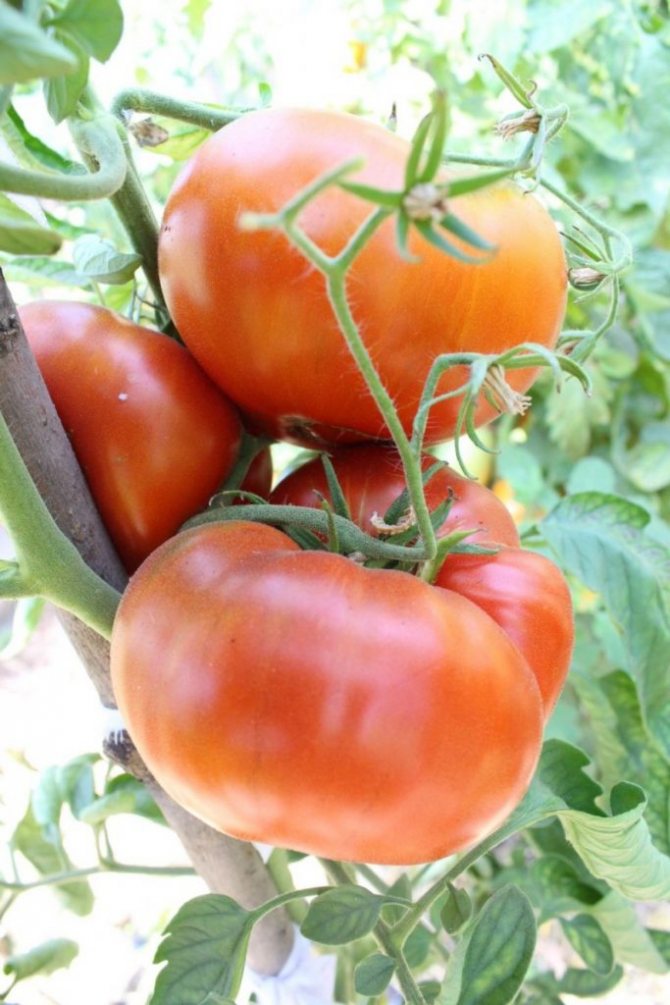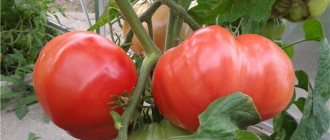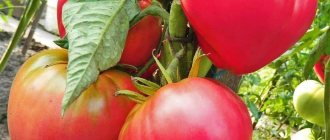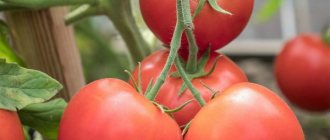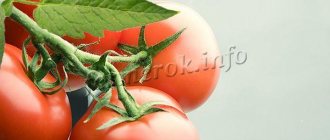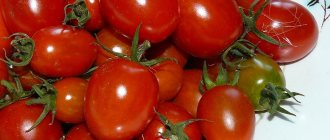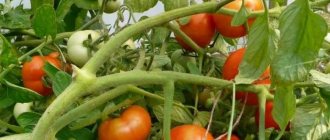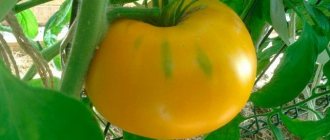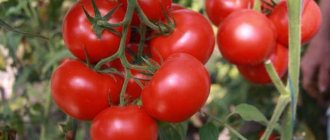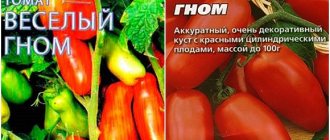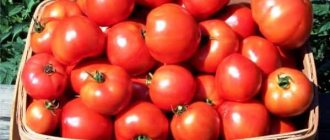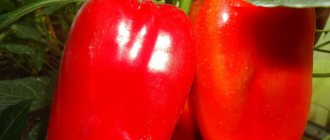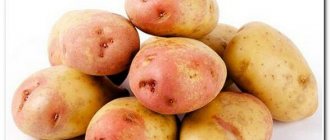Tomato Pink honey: characteristics and description of the variety
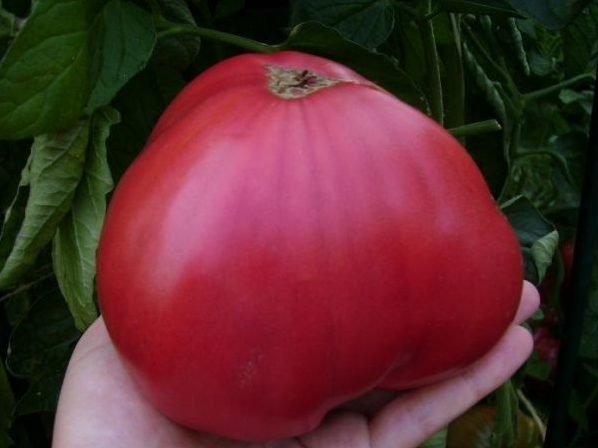
Tomato pink honey
The originator of the variety is the breeder Postnikova Olga Valentinovna, on her account such masterpieces as Batyan, Lazyanka, Tolstye Jack, Konigsberg and many others. Pink honey got into the State Register in 2006 after short trials. There are no regional restrictions for its cultivation. It grows equally well everywhere, although in the central zone, and even more so, to the north, it succeeds better in a greenhouse. The first to distribute the seeds of the tomato variety Pink Honey began. Now they can be bought from almost all seed companies - it is popular.
Description
The description of the variety is its “calling card”. It helps the gardener to properly organize the care of the plant.
- Pink honey tomatoes have sparse foliage and give few stepchildren, which makes the gardener's job easier.
- The height of the stem depends on the habitat: in the greenhouse - up to 1.5 m, on the street - does not exceed 1 m, more often - up to 70 cm.
- From 3 to 6 ovaries appear on a simple flower cluster.
Advice! When two neighboring flowers grow together, which sometimes happens with a pink honey tomato, one is formed - terry (not to be confused with a viral disease - if it is present, there will be no ovary at all). Fruits from such flowers grow large, but irregular in shape. It is better to remove them immediately.
A description of the Pink Honey tomato variety would be incomplete, if not to say about its fruits. They are flat-round in shape, sometimes resembling a heart, a slight ribbing is clearly visible. In green tomatoes, a dark spot in the area of the stalk is clearly visible. The color of ripe fruits is deep pink, and the average weight is about 300 g, if you keep it in 1 stem and normalize the ovaries, you can get a record holder of 1-1.5 kg. But mass is not the most important thing. All gardeners note an amazing taste - sweet and rich. The pulp is dense, sugar at the break, the skin is thin, so it will not be possible to store and transport the fruits for a long time. Yes, it is not necessary. The entire crop is quickly eaten up. Pink honey tomatoes make a delicious juice, but they are not suitable for whole-fruit harvests - they are too large.
Characteristic
The opinions of gardeners differ on the early maturity of the tomato. The originator considers it to be mid-season and states the ripening period of 110-115 days. But warm and sunny weather allows you to harvest earlier. There are in the characteristics of the tomato variety Pink honey and other features:
- tomato Pink honey is one of the determinants - it can be tilted on its own, not requiring pinching of the growth point, but the height of the main stem is like that of medium-sized tomatoes;
- cultivate in 2 stems;
- fastening them to the support is a must, often you have to tie up the brushes and even each fruit;
- for 1 sq. no more than 3 plants are placed per meter;
- it is not too resistant to fungal diseases, especially to late blight and cladosporiosis, prevention is a must.
Advice! So that ripe fruits do not have green shoulders, plants should have plenty of potassium.
Yield
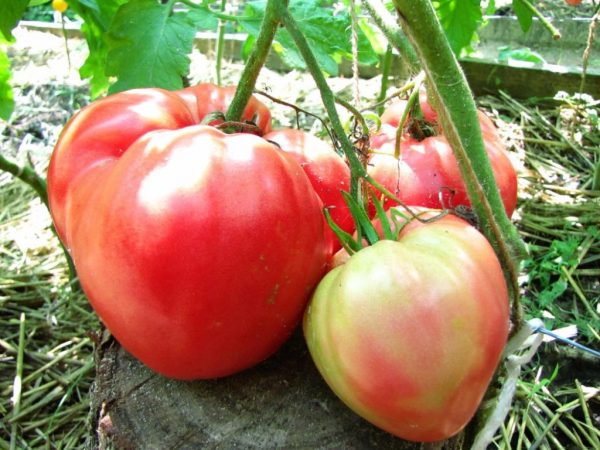

Tomato variety Pink honey
Manufacturers believe that from 1 sq. m plantings, you can collect an average of 3.8 kg of fruit. That's not a lot. The yield of tomato Pink honey can be increased by good care and rationing of flowers in the brush. Most tomatoes can be harvested when a bush is formed into two stems.
Advantages and disadvantages of the variety
The pluses, first of all, include a rather early ripening period and large fruits of excellent taste. The plant is not too demanding on care and soil, it grows well even on salted soil. It is enough to buy the seeds of this variety once, and then sow the self-collected ones.
The cons are quite tangible:
- average yield;
- inability to store and transport;
- low resistance to disease.
But, despite this, for many gardeners, the Pink Honey tomato is a favorite variety with which they will never part. There is simply no other pink tomato with a sweet, sour taste.
Reviews of gardeners
Tomato variety Pink honey is liked by many of those who have already planted it, for its unpretentious care and a high percentage of seed germination. The description indicates that a good harvest can only be obtained by planting the bushes in fertile and pre-fertilized soil.
Even a novice gardener can handle this variety. The only significant drawback is low resistance to pests, which is why prevention is indispensable.
The bushes do not have too strong shoots, and under the weight of the tomatoes they can break off altogether. For this reason, they need to be tied up. Otherwise, even if the shoots do not break, the bush bends by itself, and the yield level begins to decline, as does the taste of the fruit.
Tomatoes Pink honey is grown for the subsequent creation of juices and sauces, they are rarely used in canning.
Seedless growing method
The seedless way of growing tomatoes has its advantages
- plants do not waste time adapting after transplanting;
- they develop faster and are stronger than their indoor counterparts;
- their root system is pivotal, goes deep into the ground, so tomatoes suffer less from drought.
In the middle lane, this method is suitable only for ultra-early ripening varieties, and even then they do not always have time to give up the entire crop during a short summer. The southern regions are a different matter: the soil warms up to the 15 degrees required for sowing already in April. There is an abundance of bright sunshine. Fruiting will begin in August and will continue throughout September and most of October. This is in the open ground, and in a greenhouse, albeit not heated, you can sow much earlier.
How to do it?
- Choose a bed that has not been inhabited by plants from the Solanaceae family for 3 years. It is best if pumpkin seeds, onions or cabbage were grown there last season. The sun should illuminate the garden all day.
- Under the autumn digging, 2 tbsp is introduced. spoons of superphosphate, a glass of furnace ash and a bucket of humus, all this is for 1 sq. m.
- In the spring, the soil is loosened, if necessary watered, holes are dug about 5 cm deep in 40 cm increments, 2-3 seeds are laid out in each and covered with soil.
- The plantings are covered with foil. As soon as shoots appear, it must be removed, plastic bottles filled with warm water must be placed between the rows and covered with foil again.
- As soon as the tops of the plants begin to reach the shelter, it is removed.
Advice! In extreme heat, plants need to be watered and ventilated.
Further care for the plantings is the same as for the planted seedlings.
Brief information about the variety
- Fruit and bush: pink tomatoes. Weight - 700 g. Determinate bush, reaches 0.6-1 m.
- Yield: up to 6 kg per bush.
- Sustainability: the plant tolerates frost well, does not differ in resistance to fungal diseases and pests.
- Spread: the variety can be grown in any region, in the open field - only in the Rostov, Volgograd and Krasnodar regions, in Stavropol.
- Application: tomatoes are used for making juices and sauces, they are rarely canned.
- Landing: use seedling and seedling methods. In the first case, the landing is performed in early May according to the 40x60 scheme, in the second - at the end of April or early May, the scheme is 30x60.
- The soil: nutritious, fertile and light.
- Care: you need to water the plant every 7 days.Feed - 3 times during the season, pinching must be carried out to remove shoots under flower brushes, the formation is performed in 1-2 stems.
- Ripening period: ripening occurs in August. Fruiting continues until late summer or early autumn. You can store tomatoes for no more than 10 days.
Growing seedlings
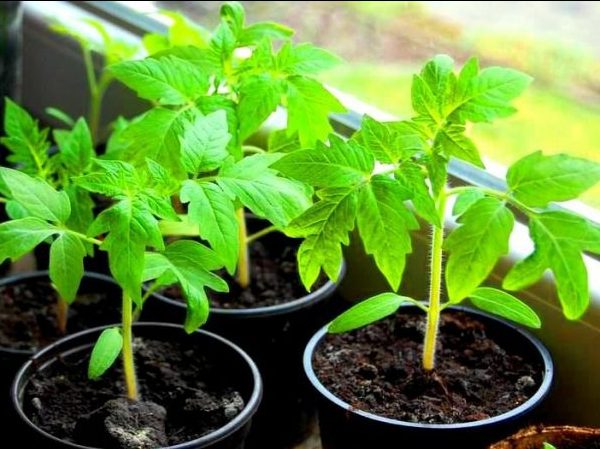

Tomato Pink honey, seedlings
Each region has its own terms of relocation of seedlings to a greenhouse or soil. They are dictated by climatic and weather conditions. An experienced gardener knows the time of their occurrence well. By the time of planting, the bushes must have at least 6 leaves, the thickness of the stem is about 6 mm, and the height of the plants is about 25 cm. Such seedlings of tomato Pink honey occur at the age of 65 days. Add another 5 days for the emergence of shoots and calculate the sowing time.
What is needed for sowing?
- Containers, preferably separate for each seed.
- Soil, a purchased or self-made mixture: garden soil taken from beds where there were no plant diseases and nightshades did not grow, and sand in a ratio of 1: 0.5. It is enriched with ash and complex fertilizers - glass and art. spoon on a bucket.
Advice! The soil must be frozen or steamed twice, and the containers must be disinfected.
Seeds are prepared:
- choose the largest and fattest;
- disinfected in any convenient way (in potassium permanganate 1% - 20 minutes, in warm 2% hydrogen peroxide - 8 minutes, in vodka - 15 minutes, in half-diluted aloe juice - 12 hours), washed;
- treated with a growth stimulant - according to the instructions;
- sprout between two damp cotton pads or pieces of cloth (they should not float in water).
Advice! The last point can be skipped and sown immediately after soaking for 12 hours.
Sowing begins:
- holes are made in containers;
- fill them with moistened soil;
- deepen each seed by 1 cm;
- wrap containers with foil;
- placed in heat (25 degrees).
The crops do not need light at this time, but it will be needed as soon as the shoots loops looked out of the soil. And not only that, a lower temperature is also needed so that roots grow faster: at night - 12 degrees, during the day - 16 degrees.
It remains only to create suitable conditions for the seedlings: an abundance of light, a stable temperature a week after germination - at night at 18 degrees and daytime at 23 degrees, watering with warm water when the soil surface dries out, 2-3 feeding with a weak solution of complex fertilizer with poor growth. If sown in a common container, at the time of the formation of 2 leaves, not counting the cotyledons, the plants dive - they are transplanted into separate cups, protecting the roots from damage.
A couple of weeks before moving to a garden bed or greenhouse, seedlings are taught to new conditions of existence - they are taken out, if the weather permits, outside. First, for half an hour, shading with a non-woven material, and then longer.
Advantages and disadvantages
Pros:
- undersized, easy to care for;
- large-fruited;
- good productivity;
- manages to ripen before frost;
- tolerates a short drought;
- excellent taste without sourness;
- fruits are consumed fresh, make pasta, sauces, tomato juice.
Minuses:
- increased susceptibility to disease;
- needs to form a bush and tie up fruit brushes;
- suffers from high humidity and low temperatures;
- not suitable for storage, transportation and whole-fruit rolls.
Landing in the ground
In order for the tomatoes to grow right away, it should be about 20 degrees Celsius outside. The soil should also warm up. If its temperature is below 15 degrees, the roots simply cannot absorb food. Even in the same region, this happens at different times, let alone different, located hundreds or thousands of kilometers from each other. We'll have to check the weather forecast. If it is favorable, proceed to planting.
On a cloudy day, holes are formed in the soil dug up since autumn (it is prepared in the same way as for seedless growing of tomatoes) in a greenhouse or in a garden bed. Their depth is slightly more than the length of the root system. The distance between the planting pits depends on the future formation of the Pink Honey tomato variety: when dosing in 1 stem - 40x50 cm, in 2 - 50x60 cm. Each hole is enriched with st. spoon of simple suphosphate or teaspoon - double and tbsp. a spoonful of ash, a handful of humus. After feeding, before planting, the soil is well mixed and so much water is poured into the hole to make mud. Plants are planted in it. The soil is mulched with straw or hay; aged sawdust or mown and withered grass without seeds are suitable.
If for some reason the seedlings have outgrown, they are planted not in holes, but in grooves - "lying". Lay the stem horizontally so that the top faces north. The lower leaves, which are covered with soil, must be removed. Plants planted in this way develop a powerful root system, but the fruiting period is slightly shifted.
Advice! It will not be superfluous to carry out prophylaxis against fungal infections already at the planting stage and replace part of the water with a solution of phytosporin M - they are prepared according to the instructions.
Now the plants will need watering in a week. To make them take root better, cover the bushes with non-woven material.
Planting seedlings in a greenhouse
In greenhouses and greenhouses, tomatoes are grown from ready-made seedlings. Soil preparation is carried out in a similar way in the autumn. Tomato seed must be soaked for 24 hours, then spread over a bowl filled with a mixture of soil, peat and humus. Planting can be carried out from February 15 to mid-March - this is the most favorable time.
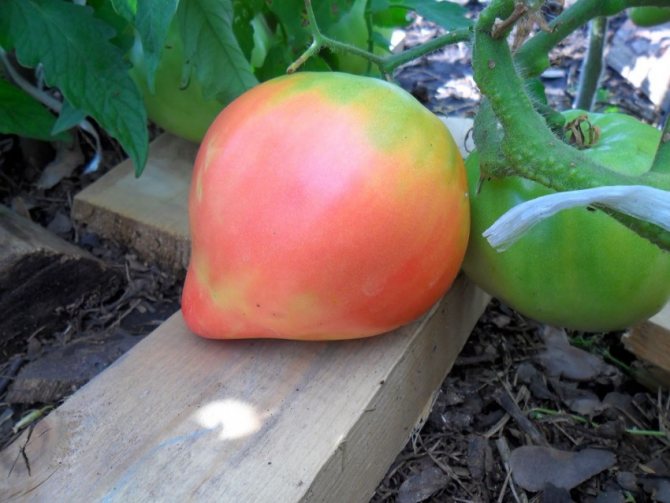

The seeds must be thrust into the prepared soil to a depth of at least 1 cm and covered with foil, and then placed in a dark, warm room.
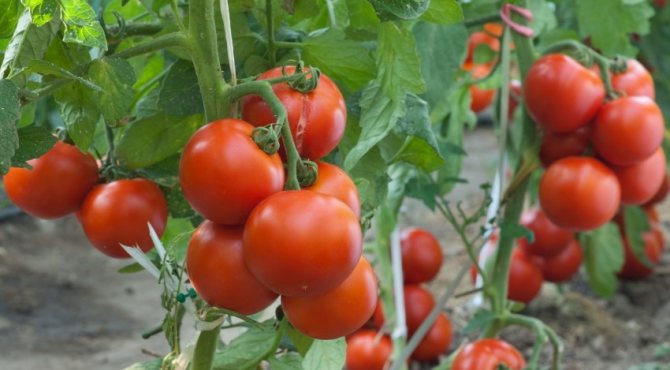

After the germination of the first shoots, the seedlings must be placed in the sun, periodically sprinkling with non-cold water. Planting can be done after the seedlings have reached 1.5 months of age.
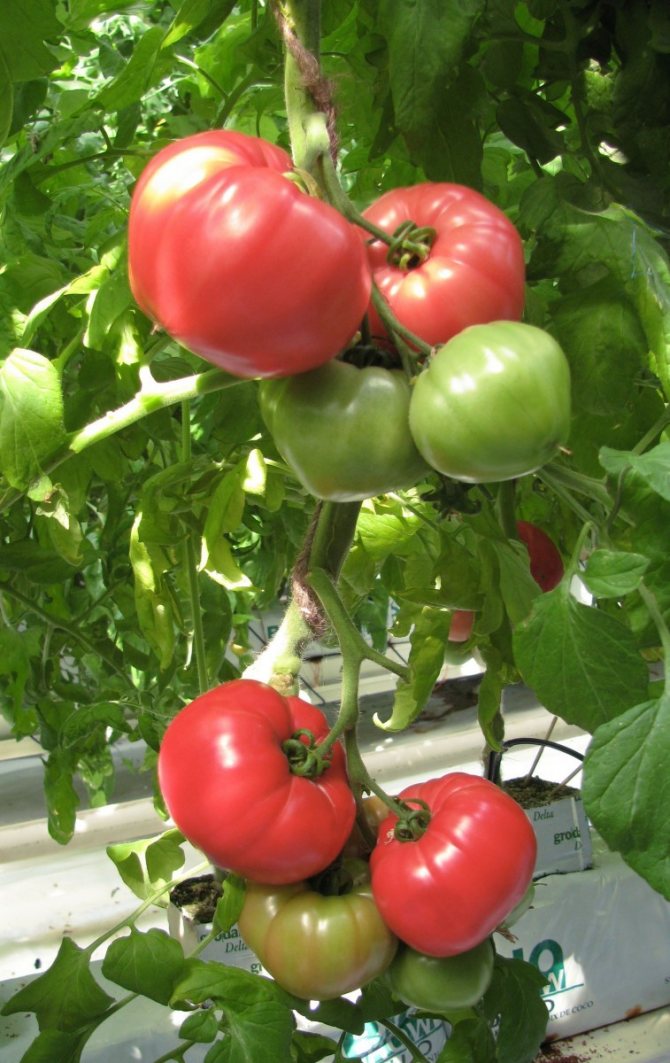

Tomato Pink honey: growing features
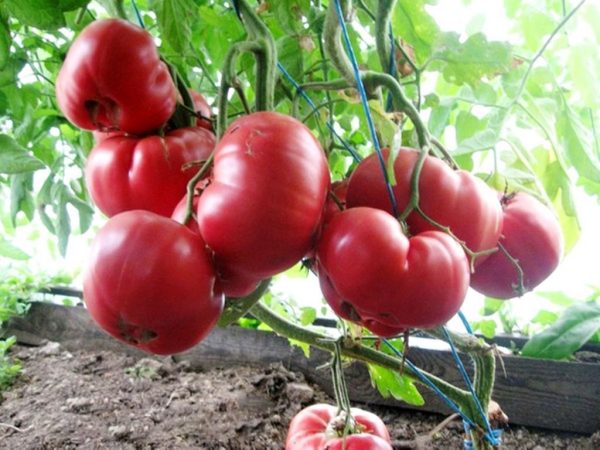

Tomato Pink honey in a greenhouse
Tomato Pink honey, like all tomatoes, needs an optimal air temperature without sharp fluctuations, moisture and nutrition. To achieve high yields, the bush must be properly shaped and tied up.
Watering
Watering should be moderate but regular. When grown outdoors, it is adjusted downward if it rains. In the greenhouse, everything depends only on the gardener. At different stages of growth, the need for water is different:
- after the seedlings have taken root and before the first ovaries appear, the tomatoes are watered once a week, spending from 3 to 5 liters per bush, if it is hot, the frequency of humidification is increased;
- as the bushes grow, the water consumption is increased to 20 liters per 1 sq. m.
The frequency of humidification largely depends on the weather: when it is cloudy, they water less often, and if it is cold, they do not moisturize at all. In the heat, do not wait until the leaves begin to fade, otherwise the ovaries may fall off. There are several patterns that need to be observed:
- water only with warm, settled water;
- humidify in the morning, ventilate the greenhouse after it;
- do not pour water on the bushes themselves, only at the root;
- water the entire area of the garden - the root system of tomatoes can reach a diameter of 2.5 m;
- do not take long breaks between moisturizing - the fruits will crack.
Advice! Watch the plants, they will tell you when to water them.
Top dressing
Immediately after planting, plants grow vegetative mass and need nitrogen, but in the presence of phosphorus and potassium. Therefore, after 2 weeks they are fed with a solution of 2 tablespoons. urea, the same amount of superphosphate and 1 tbsp. potassium sulfate. This amount is diluted in a ten-liter bucket of water.They spend 0.5 liters per bush. Mineral nitrogen can be replaced with organic: 0.5 l mullein with the addition of st. l. Stir nitrophosphate in 10 liters of water. Consumption rates are the same.
When the bushes bloom, the next top dressing is with a predominance of potassium and phosphorus: for a ten-liter bucket of water, you will need 1 tsp of potassium sulfate or 2 tbsp. l. ash and 1 tbsp. l. superphosphate. A liter of solution is poured under each bush.
When the ovaries are poured, 1.5 liters of solution from 1 tbsp are poured under each plant. l. nitrophoska 1 teaspoon of humate + 7 per 10 liters of water.
Advice! In the middle of the season, foliar dressing is carried out with calcium nitrate to prevent top rot.
If not all flowers turn into ovaries, spraying with a boric acid solution will be required: 1 g per 1 liter of water.
Well support the growth and fruiting of tomatoes, strengthen their immunity green fertilizers - infusions of nettle and other herbs with the addition of ash and mullein.
Forming a bush
If you do not remove the stepchildren from the tomatoes, we get a green jungle with a small amount of fruit. Passionking should be done regularly. If it is decided to lead a tomato in 1 stem, they are all cut off; with a two-stem culture, they leave the stepson that grew under the first flower brush.
Garter
To prevent the stems from lying on the ground, they are tied to a support. But this is not enough for the Pink Honey tomato. Each brush has to be fixed. And if you are lucky and a giant tomato grows on a bush, they tie it up personally.
How to deal with diseases and pests
| Problem | Chemicals | Folk ways |
| Top rot |
|
|
| Brown spot |
|
The methods must be alternated, using one of them every 7 days. |
| Scoop |
|
|
| Gray rot |
| Dissolve 80 g of baking soda in 10 liters of food water. Spray with a spray bottle. If signs reappear, perform a second procedure after 5-7 days. |
| Late blight |
| Chop fresh garlic (1 head) with a stem using a meat grinder and cover with hot water. After a day, dilute in 10 liters of clean water and use for spraying the bush. Repeat the procedure every 14 days. |
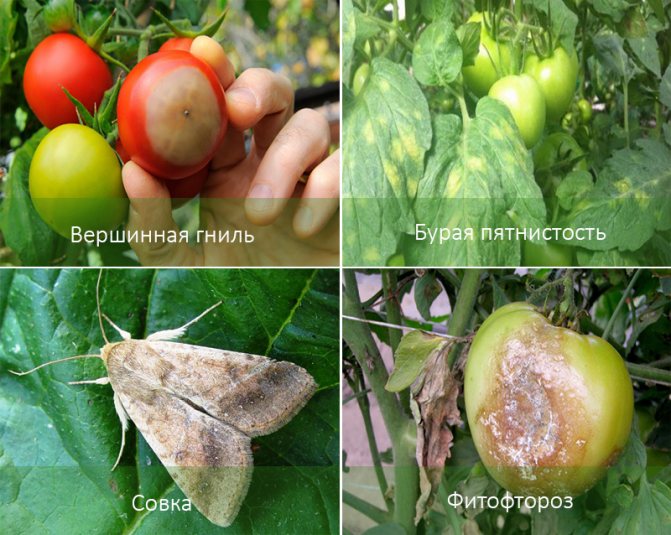

Disease prevention and pest control
In addition to the above measures, tomatoes require special treatment for the prevention and treatment of diseases and harmful insects or bacteria.
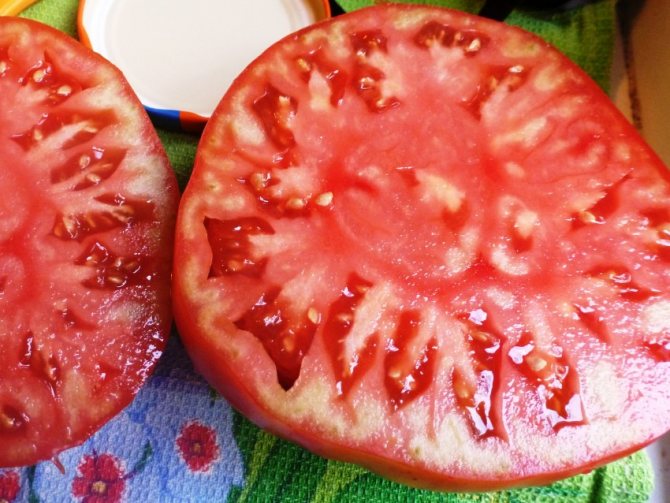

For this, the drug Ridomil is excellent, which helps to prevent the development of fungus and includes active substances - fungicides. Insecticides will help get rid of annoying insects.
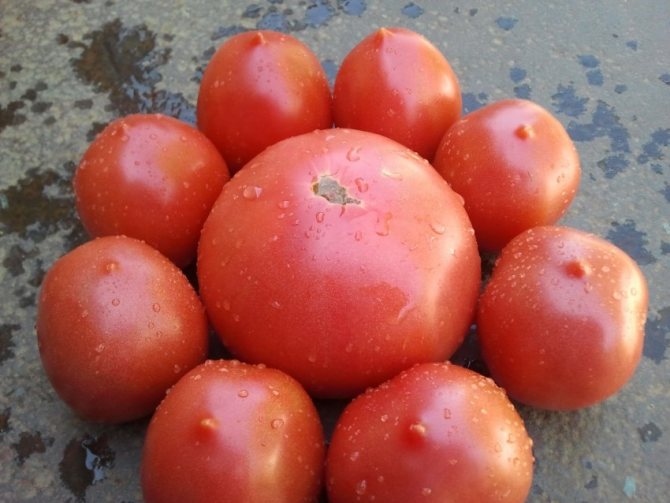

Experts advise to observe the conditions and requirements regarding care and planting in order to avoid the occurrence of late blight, gray rot and other diseases.
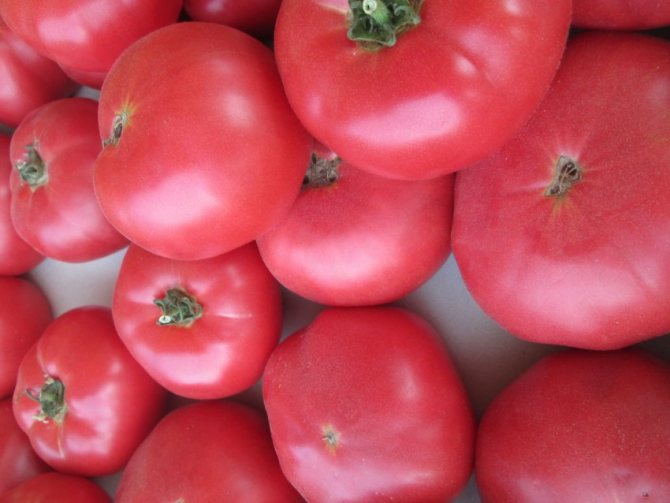

Description of fruits
The name of the tomato clearly characterizes its main features: pink color and sweetness of fruits.
"Pink honey" is a large-fruited variety that occupies a leading position in fruit size. Tomatoes were bred by Novosibirsk breeders; for sale seeds can be found at agro.
The weight of one tomato reaches 1–1.5 kg. The color of the fruit is pink.Tomatoes are fleshy, sweet, sugary, without the sour taste characteristic of tomatoes. The first tomatoes are the largest, the rest weigh 700–800 g.
Tomatoes are heart-shaped; have light ribbing. Tomato consists of four or more chambers and contains a high percentage of dry matter. The fruit has a thin skin and is moderately resistant to cracking. Such tomatoes are not stored for long; transportation is undesirable for them.
Usually juicy pink honey tomatoes are consumed fresh. They make delicious adjikas, ketchups, pastes and juices. Sometimes even jam is made from such tomatoes. But for canning, they are not suitable because of their large size.
Characteristics and cultivation of the Batianya tomato variety
Suitable region and climate
- In the climatic conditions of central Russia, temporary film shelters or greenhouses are needed for the successful cultivation of Pink Honey tomatoes.
- In northern regions with short summers and harsher climatic conditions, tomatoes of this variety should be grown in heated, stationary greenhouses.
- The most favorable climate for growing this crop in the open field is in the Stavropol Territory, Krasnodar Territory, Volgograd and Rostov Regions.
Garter and pinning
According to the description of pink honey tomatoes, pinching is a mandatory procedure for this species. It is caused by the removal of excess shoots on the stems of plants. This makes it possible to use watering and fertilization as efficiently as possible, since the shoots take on many useful substances, which reduces the yield and size of the fruits.
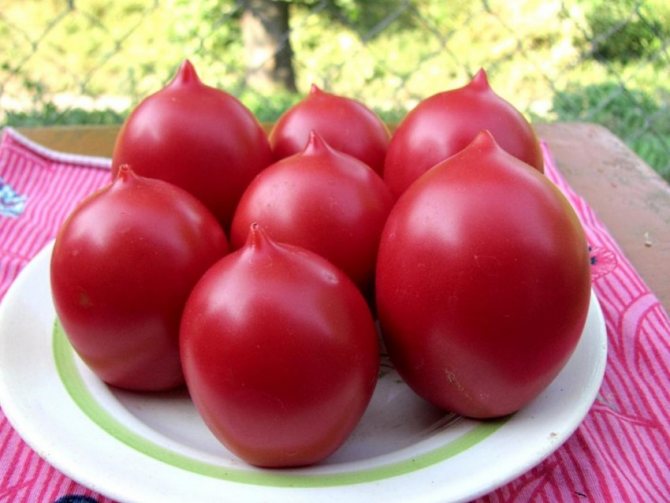

Removal of stepchildren begins from the brush during flowering. The length should be no more than 5 cm. The procedure is best carried out in warm weather, periodically repeating every 10 days.
Adult plants need to be tied to pegs hammered into the soil, so that during fruiting the bush can withstand a huge mass of fruits and not bend. This is especially important when planting in an open way, where wind and rain increase the likelihood of plant damage.
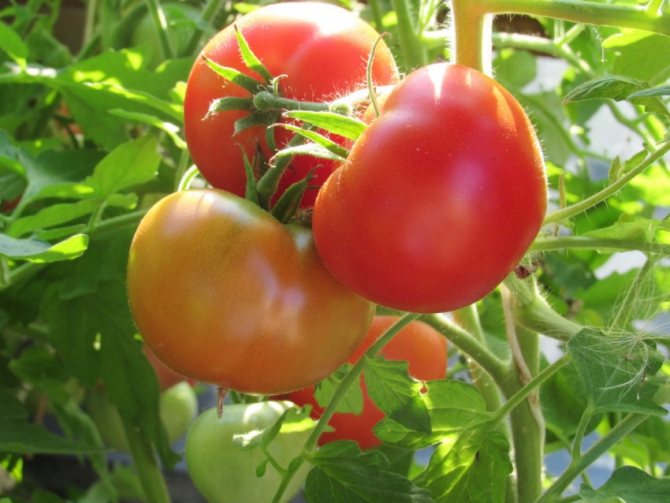

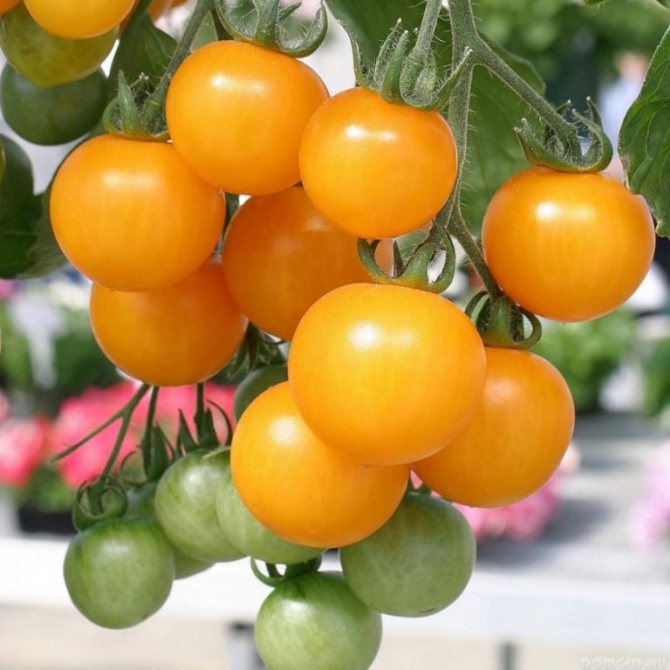

Tomato varieties for open ground: the best yielding varieties. 125 photo and video recommendations of experts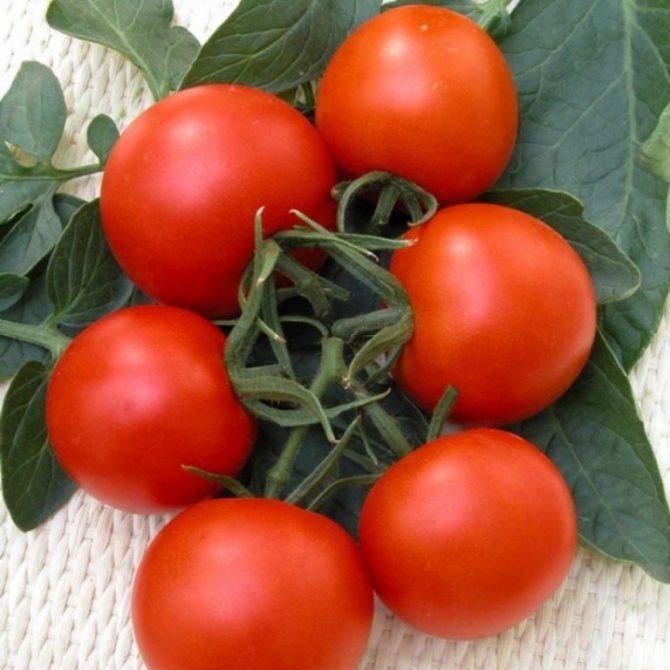

Verlioka tomato: characteristics and description of the variety. Growing and caring for a verlioka (video + 110 photos)
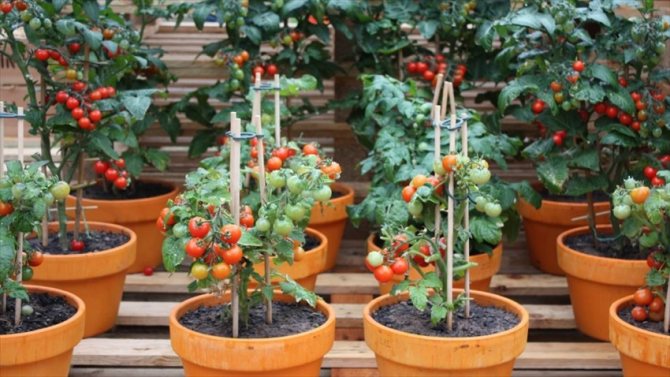

Cherry tomatoes on the windowsill, at home: how easy and quick to grow tomatoes? Tips and tricks for beginners (105 photos)

